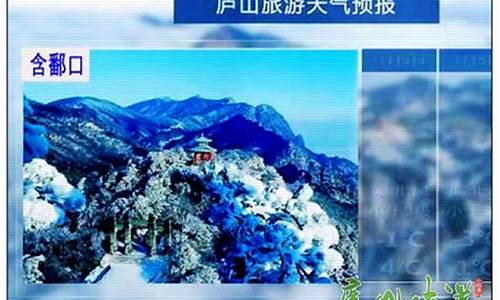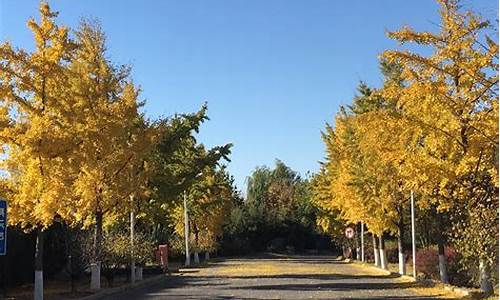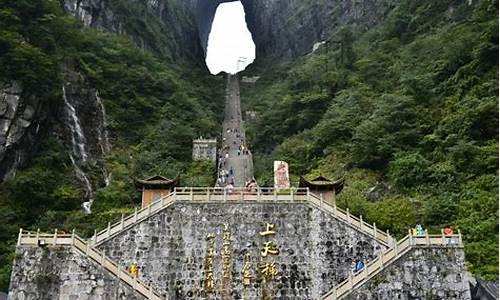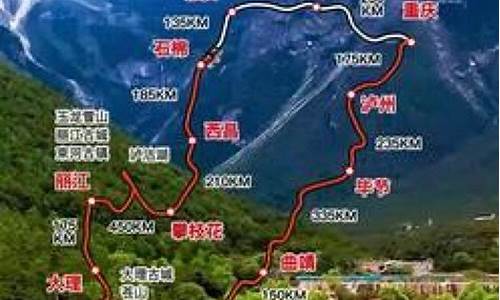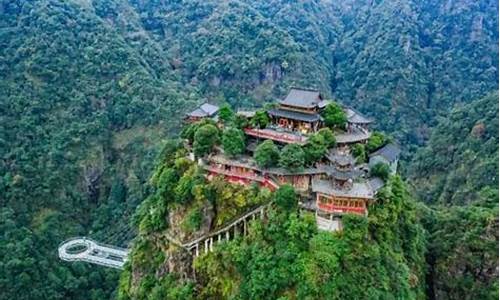夏威夷旅游攻略英文翻译-夏威夷旅游口译
1.夏威夷英文翻译
2.在线等!!急!!夏威夷的英文简介,最好有翻译
3.人教版高一英语必修一44页课文翻译,急急急!如题 谢谢了
4.翻译一小段话
夏威夷英文翻译

Hawaii's tallest mountain, Mauna Kea stands at 13,796 ft (4,205 m)[16] but is taller than Mount Everest if followed to the base of the mountain—from the floor of the Pacific Ocean, rising about 33,500 ft (10,200 m).[17]
Geology
All of the Hawaiian islands were formed by volcanoes erupting from the sea floor from a magma source described in geological theory as a hotspot. As the tectonic plate beneath much of the Pacific Ocean moves in a northwesterly direction, the hot spot remains stationary, slowly creating new volcanoes. This explains why only volcanoes on the southern half of the Big Island, and the Lō?ihi Seamount deep below the waters off its southern coast, are presently active, with Lō?ihi being the newest volcano to form.
The last volcanic eruption outside the Big Island occurred at Haleakalā on Maui before the late 18th century, though Haleakalā's most recent eruptive activity could be hundreds of years earlier.[18] In 1790, Kīlauea exploded in the deadliest eruption known to have occurred in what is now the United States.[19] As many as 5,405 warriors and their families marching on Kīlauea were killed in an eruption in 1790.[20]
Volcanic activity and subsequent erosion created impressive geological features. The Big Island is the world's second highest island.[citation needed]
Slope instability of the volcanoes has generated damaging earthquakes with related tsunamis, particularly in 1868 and 1975.[21]
Flora and Fauna
Because of the islands' volcanic formation, native life before human activity is said to have arrived by the "3 W's": wind (carried through the air), waves (brought by ocean currents), and wings (birds, insects, and whatever they brought with them). The isolation of the Hawaiian Islands in the middle of the Pacific Ocean, and the wide range of environments on high islands in and near the tropic, has resulted in a vast array of endemic flora and fauna (see Endemism in the Hawaiian Islands). Hawaii has more endangered species and has lost a higher percentage of its endemic species than anywhere in the United StatesThe history of Hawaii can be traced through a succession of dominating industries: sandalwood,[54] whaling,[55] sugarcane (see Sugar plantations in Hawaii), pineapple, military, tourism, and education. Since statehood in 1959, tourism has been the largest industry in Hawaii, contributing 24.3% of the Gross State Product (GSP) in 1997, despite efforts to diversify. The gross output for the state in 2003 was US$47 billion; per capita income for Hawaii residents was US$30,441.
Exports from Hawaii include food and apparel. These industries play a small role in the Hawaii economy, however, due to the considerable shipping distance to the ports of the West Coast of the United States. Food exports include coffee (see coffee production in Hawaii), macadamia nuts, pineapple, livestock, and sugarcane. Agricultural sales for 2002, according to the Hawaii Agricultural Statistics Service, were US$370.9 million from diversified agriculture, US$100.6 million from pineapple, and US$64.3 million from sugarcane.
Hawaii has a relatively high state tax burden. In 2003, Hawaii residents had the highest state tax per capita at US$2,838. This is partly because education, health care and social services are all rendered at the state level, as opposed to the municipal level in all other states.
Millions of tourists contribute to the collection figure by paying the general excise tax and hotel room tax; thus not all the taxes collected come directly from residents. Business leaders, however, consider the state's tax burden too high, contributing to both higher prices and the perception of an unfriendly business climate.[56] See the list of businesses in Hawaii for more on commerce in the state.
Hawaii was one of the few states to control gasoline prices through a Gas Cap Law. Since oil company profits in Hawaii compared to the mainland U.S. were under scrutiny, the law tied local gasoline prices to those of the mainland. It took effect in September 2005 amid price fluctuations caused by Hurricane Katrina, but was suspended in April 2006.
There are several areas in Hawaii under the protection of the National Park Service.[23] Two areas are designated as national parks: Haleakala National Park near Kula, Maui, includes Haleakalā, the dormant volcano that formed east Maui; and Hawaii Volcanoes National Park in the southeast region of the island of Hawaii, which includes the active volcano Kīlauea and its various rift zones.
There are three national historical parks: Kalaupapa National Historical Park in Kalaupapa, Moloka?i, the site of a former colony for Hansen's disease patients; Kaloko-Honokōhau National Historical Park in Kailua-Kona on the island of Hawaii; and Pu?uhonua o Hōnaunau National Historical Park in Hōnaunau on the island of Hawaii, the site of an ancient Hawaiian place of refuge. Other areas under the control of the National Park Service include Ala Kahakai National Historic Trail on the island of Hawaii and the USS Arizona Memorial at Pearl Harbor on O?ahu.
The Papahānaumokuākea Marine National Monument was proclaimed by President George W. Bush on June 15, 2006. The monument covers roughly 140,000 square miles (360,000 km?) of reefs, atolls and shallow and deep sea (out to 50 miles (80 km) offshore) in the Pacific Ocean, larger than all of America's National Parks combined.[24]
Climate
See also: List of Hawaii tornadoes
A sunset in Waikiki
Sunset in Kona. The colors of the sunset are partly due to vogThe climate of Hawaii is typical for a tropical area, although temperatures and humidity tend to be a bit less extreme due to constant trade winds from the east. Summer highs are usually in the upper 80s °F, (around 31°C) during the day and mid 70s, (around 24 °C) at night. Winter day temperatures are usually in the low to mid 80s, (around 28 °C) and (at low elevation) seldom dipping below the mid 60s (18 °C) at night. Snow, not usually associated with tropics, falls at 4,205 meters (13,796 ft) on Mauna Kea and Mauna Loa on the Big Island in some winter months. Snow rarely falls on Maui's Haleakala. Mount Wai?ale?ale, on the island of Kaua?i, has the second highest average annual rainfall on Earth, about 460 inches (11.7 m). Most of Hawaii has only two seasons: the dry season from May to October, and the wet season from October to April.[25]
Local climates vary considerably on each island, grossly divisible into windward (Ko?olau) and leeward (Kona) areas based upon location relative to the higher mountains. Windward sides face cloud cover. The tourist industry therefore concentrates resorts on sunny leeward coasts.
在线等!!急!!夏威夷的英文简介,最好有翻译
"Paradise on earth", also known as the Hawaiian Islands, a pleasant climate and scenery of airports, is embedded in the central part of the South Pacific shining pearl, with a total area of over 16,000 square kilometers, The United States is also one of the final state -- the 50th state. From the Hawaiian Islands comprising 132 islands. One of the most attractive island : Oahu I., also known as the Island of Hawaii Big Island, Mao-Iraq Island, a lovely island and Maluokai Island. Hawaii has the world's most beautiful beaches, mountain linked, and the coastline is quite striking. , And the coastline has a total length of 200 kilometers, the total length of the beach 298 km, there will be as long as 40 km of the natural bathing beaches. America's Best Beach, Hawaii has six. Here the clear blue of the water so that tourists always praised. White, yellow, black and green or even the beach, embedded throughout the islands constitute an exquisite rate wonderful landscape. Some beaches depth of strong winds and huge waves rolling on the ground, and is an excellent venue for surfing. Hawaii exceptional climatic conditions, and creating a mix of the natural landscape. In this confused place arbitrary nature of the uncanny workmanship carved sway the Earth, and all kinds of things here enrichment. Unique climate, beautiful natural scenery and the people of Hawaii and the hospitality of the "Casino spirit" of Hawaii has become a tourist destination in three great conditions. Today from people around the world, can feel her unique and lively temperament and style.有「人间天堂」之称的夏威夷群岛,气候宜人,风光迤逦,是镶嵌於南太平洋中部的璀璨明珠,总面积一万六千多平方公里,同时也是美国的最后一州——第五十州。夏威夷群岛由132个岛组成。其中最吸引人的岛屿为:瓦胡岛、夏威夷岛又称大岛,茂伊岛,可爱岛和摩洛凯岛。 夏威夷拥有世界上最迷人的海滩,山海相连,海岸线曲折多变。,海岸线总长度有1,200公里,沙滩总长度为298公里,有长达40公里的天然海滩浴场。全美的十佳海滩,夏威夷占有六个。这里湛蓝清澈的 海水总是令游客赞叹不已。白色、**,甚至黑色和绿色的沙滩,镶嵌在群岛各处,构成一幅幅美妙绝伦的风景画。有些海滩水深风大,巨浪翻滚,是冲浪的绝佳场所。 夏威夷得天独厚的气候条件,造就了千姿百态的自然景观。在这方寸之地,大自然的鬼斧神工任意雕琢挥洒,地球上各种景物在这里浓缩。 得天独厚的气候,美丽的自然风光与夏威夷人的热情好客的「阿罗哈精神」是夏威夷之所以成为旅游胜地的三大条件。今天来自世界各地的人们,都能感受到她那与众不同、多姿多彩的气质与风格。
人教版高一英语必修一44页课文翻译,急急急!如题 谢谢了
每种文化都有其表达友好的方式。在夏威夷群岛 ,友谊是“aloha”精神的一部分。很久以前,最早 期的夏威夷居民的语言中,“aloha”有种特殊的含 义,就是“快乐相伴”。 夏威夷人相信:一旦某个人爱上了一片土地,他 就会爱上生活在那里的人们。这是第二种最重要 的友好的标记。在夏威夷语言中,叫做“lokahi”, 意思是“所有人是一体”,这片土地是所有居民的 共同家园,当你在这里享受生活的时候你不能自 私。现在有很多不同的人把夏威夷称为自己的家 乡。实际上夏威夷是很多小的社区构成的一个大 的社区。人们都互相帮助,这使他们每个人觉得 自己更有力量。人们相信如果彼此都能和平相处 的话,夏威夷就会变成天堂。人们提倡行为举止 要想海风一样温和有礼,而当出现问题的时候, 解决问题的时候要体谅对方。所以当夏威夷人谈 论家庭的时候,实际是在谈论岛上所有的居民。 在平静的生活中,夏威夷人发展了第三种表达友 谊的标记。就是用送“lei”给朋友,"lei”是把鲜花连 成一串,挂到朋友的脖子上,然后在朋友面颊上 吻一下,“lei”也会送给来岛的游客。当游客们听 到“aloha”时,他们感觉回到了家里一样。“aloha” 也有再见的意思,所以当游客们离开时,还会听 到人们说aloha”,"aloha”还可以表达“我们的心灵 一起歌唱”的意思。也许多数游客就是这样记住了 他们的新朋友。
翻译一小段话
I have received the letter, in which there is a mistake, that is my name is niuying instead of miuying. I am a publisher, and I have been into publishing for 27 years. I am going to Los Angeles for a holiday, and I was invited by my friends Mr. and Mrs. Hu. Though I have never been to Hawaii, I know that place and I like it. Because I usually draw Chinese painting, I really like the customs of Hawaii. For my part, going to Hawaii in 2011 maybe is the most exciting thing if I have time.
不是翻译机器翻的~
声明:本站所有文章资源内容,如无特殊说明或标注,均为采集网络资源。如若本站内容侵犯了原著者的合法权益,可联系本站删除。

